Best Electric Scooters for Heavy Adults – Strong & Reliable
Looking for electric scooters with higher weight capacities? Discover sturdy, powerful scooters built specifically for heavier riders. In this guide, we’ll explore how to select the ideal scooter designed to meet your unique needs, ensuring comfort, safety, and optimal performance on every ride.
Choosing an electric scooter isn’t always straightforward, especially if you’re a heavier adult. Weight capacity significantly influences scooter performance, durability, and safety. Picking a scooter not equipped to handle your weight can lead to decreased efficiency, rapid battery drain, reduced lifespan, and even potential accidents.
When shopping for electric scooters, heavy adults should pay close attention to maximum load ratings. This specification isn’t just a guideline—it’s critical to ensuring smooth rides, longer durability, and safety on the road.
Let’s explore exactly what features you should prioritize and common pitfalls to avoid, as well as recommending the best electric scooters for heavy adults available in 2025.
Key Features: Motor Power, Build Quality, Safety
When choosing the best electric scooter for heavy adults, understanding the core components that influence performance and safety is crucial. Not all scooters are built the same—and when you’re carrying extra weight, the design, engineering, and components need to work harder and smarter. Here’s what to look for:
1. Motor Power: The Engine Behind Performance
The motor is what drives your scooter forward—literally. For heavier riders, motor power isn’t just a luxury, it’s a necessity.
Why Motor Power Matters:
More weight = more load on the motor.
A stronger motor ensures better acceleration, hill-climbing ability, and overall smoother rides.
Underpowered scooters will feel sluggish, may overheat, and struggle to maintain speed, especially on inclines.
What to Look For:
Minimum 500W motor for riders up to 100 kg (220 lbs)
750W to 1000W or more for riders above 100 kg, or for hilly areas
Dual-motor systems offer better torque and performance, ideal for off-road or steeper terrains
Bonus Tip:
Check the peak power as well as the nominal (continuous) power. Some scooters advertise peak power for marketing but deliver far less in real-world conditions.
2. Build Quality: Support You Can Count On
The frame and structural design of the scooter must be strong enough to handle increased stress and strain from a heavier rider.
Why Build Quality Matters:
Prevents wobbling, bending, or long-term wear
Supports a stable and comfortable ride, especially at high speeds
Extends the life of the scooter—less maintenance, fewer repairs
What to Look For:
Material: Aerospace-grade aluminum or reinforced steel frames are best for high durability and load-bearing strength.
Deck Size: A wide, non-slip deck (at least 8–10 inches wide) provides better foot placement and balance.
Suspension: Front and rear spring or hydraulic suspension systems absorb shocks and reduce vibration—critical for heavier riders who put more pressure on the chassis.
Stem & Folding Mechanism: Heavier riders should avoid scooters with flimsy or rattly folding stems. Look for reinforced locking mechanisms that can hold under pressure.
Bonus Tip:
Heavier scooters may be harder to carry—but that’s a good sign of stronger materials and components built to last.
3. Safety: Not Optional—Essential
Whether you’re a novice or an experienced rider, safety features make a huge difference—especially when carrying additional weight that increases stopping distances and affects maneuverability.
Why Safety Features Matter:
Heavier scooters require more force to stop, so strong brakes are essential
Visibility on the road is a must—especially at night or in busy city areas
A secure, stable ride prevents falls and injuries
What to Look For:
Braking System
Disc brakes (mechanical or hydraulic) provide the strongest, most reliable stopping power
Regenerative braking can help recharge the battery slightly and add another layer of deceleration
Dual braking systems (front + rear) offer better control and balance when slowing down
Lighting and Visibility
High-intensity LED headlights for night riding
Rear brake lights that activate when stopping
Reflective strips or built-in side lighting for 360° visibility
Tires and Traction
Pneumatic (air-filled) tires provide better grip and shock absorption than solid tires
Wider tires (2.5 inches or more) improve balance and stability, especially on rough or uneven roads
Off-road or dual-terrain tires are ideal if you plan to ride on gravel, grass, or poorly maintained paths
Speed and Control
Multiple speed modes (eco, normal, sport) allow you to adjust performance based on your confidence and road conditions
Cruise control features reduce hand fatigue during long commutes
Bonus Tip:
Some scooters now come with smart safety features, like anti-lock braking systems (ABS), tire pressure sensors, or app-based diagnostics that alert you to potential issues—ideal for tech-savvy riders.
Choosing a scooter with strong motor power, durable build quality, and robust safety features isn’t just about comfort—it’s about confidence and long-term reliability. Investing in these features upfront saves you from frustration, breakdowns, and unsafe rides down the road.
Remember, you’re not just buying a scooter—you’re buying peace of mind, performance, and freedom on two wheels.
Common Mistakes Heavy Riders Make When Choosing a Scooter
Choosing an electric scooter as a heavy adult requires a more thoughtful approach than just going for what looks cool or what’s trending. Many first-time (and even experienced) buyers end up with models that don’t truly support their weight, terrain needs, or usage habits. These mistakes can lead to disappointing performance, frequent repairs, safety risks, and wasted money.
Let’s look at the most common pitfalls—so you can confidently avoid them.
🚫 1. Ignoring the Weight Capacity
The biggest and most costly mistake.
Every electric scooter has a manufacturer-specified weight limit, which reflects how much the frame, suspension, motor, and brakes are designed to handle. Many riders overlook or underestimate this number, thinking a few extra kilos won’t make a difference.
Why It’s a Problem:
Exceeding the weight limit leads to weakened frame integrity, bending, or even cracking over time.
Motors overheat or struggle, resulting in poor acceleration and reduced hill-climbing ability.
Braking distance increases, reducing safety in emergencies.
Tires wear faster, and suspension systems bottom out.
Smart Tip:
Choose a scooter with at least 15–20% more weight capacity than your actual body weight. For example, if you weigh 110 kg, look for scooters rated for 130 kg or more to ensure optimal performance and long-term durability.
🔋 2. Underestimating Battery Capacity and Range
Heavier riders naturally put more strain on the scooter’s motor, which leads to faster battery drain. Choosing a model with a smaller battery (under 10Ah) might seem fine on paper but will result in shorter real-world range.
Consequences:
You might get only half the advertised range.
Mid-ride battery drops can leave you stranded or forced to push the scooter home.
The battery degrades faster when consistently under stress.
Smart Tip:
Look for:
Battery capacity of at least 15Ah for daily commutes or longer trips.
High-quality cells (e.g., LG, Samsung) for better power management and longevity.
Real user reviews from riders with similar weight to gauge the true range.
🪶 3. Choosing Lightweight or Budget Models for Convenience
We get it—lightweight scooters are easy to carry and budget models are appealing. But for heavy adults, prioritizing portability or a low price tag over strength and quality is often a mistake.
Why This Backfires:
Most budget scooters (under €500) are made for casual or lighter riders.
They use lower-grade materials and have weak motors (250W–350W).
The result? A sluggish, unstable ride with limited range and a shorter lifespan.
Smart Tip:
Even if you want something portable, prioritize strength over weight savings. Look for mid-range models that balance durability and portability, or consider scooters with trolley modes or removable batteries for easier transport.
🛞 4. Overlooking Suspension and Tire Type
Heavy riders feel every bump more intensely—especially on scooters without suspension or with solid tires.
The Issue:
No suspension = bone-rattling ride, especially on cobblestones, cracks, or off-road paths.
Solid tires have no give and transfer shocks directly to your joints and frame.
Long-term discomfort leads to rider fatigue, back pain, and damage to the scooter.
Smart Tip:
For comfort and control, look for:
Front and rear suspension (spring, rubber, or hydraulic systems).
Pneumatic (air-filled) tires at least 10 inches in diameter.
Wide tires (2.5–3 inches) to improve grip and shock absorption.
🔧 5. Forgetting to Check Component Quality
Sometimes the scooter looks robust, but the details tell another story.
Components Often Overlooked:
Cheap brakes that fade or fail under pressure
Plastic throttles or displays that crack easily
Loose folding mechanisms that can wear down and wobble over time
Smart Tip:
Check for:
Metal brake levers, not plastic
Hydraulic or mechanical disc brakes, not just electronic or foot brakes
Solid handlebar locking mechanisms and reviews about build quality over time
🧮 6. Focusing Only on Speed and Neglecting Torque
Everyone loves speed, but speed alone doesn’t determine performance—especially for heavier riders.
The Problem:
A scooter might advertise a top speed of 40 km/h, but it won’t reach that with a heavier load.
What you really need is torque—the pulling force needed to get moving, especially on hills.
Smart Tip:
Look for scooters with:
High torque motors (often found in dual-motor or high-wattage single-motor models).
Climbing angle ratings if you live in a hilly area.
Feedback from heavier riders about real-world speed and acceleration.
🧰 7. Not Considering Maintenance Accessibility
Heavier use leads to more wear and tear, meaning regular maintenance is even more important.
Common Oversights:
Buying scooters with non-standard parts that are hard to replace
No access to local support or spare parts
Difficulty repairing brakes, tires, or electronics
Smart Tip:
Choose well-established brands with available parts and service centers.
Join online forums or groups of owners (e.g., Reddit, Facebook) to find user feedback and DIY tips.
Learn basic maintenance: inflating tires, checking bolts, lubricating joints.
🛡️ 8. Ignoring Safety Equipment
Your scooter might be rock solid—but are you prepared to ride it safely?
Risky Mistakes:
No helmet or pads
Riding at top speed in traffic without experience
Overconfidence without understanding braking distance or balance changes due to weight
Smart Tip:
Always ride with:
A certified helmet
High-visibility clothing or LED accessories
Gloves and knee pads for added protection
A healthy respect for speed and braking distance
Choosing the right electric scooter as a heavier adult involves more than specs—it’s about understanding how every component works together under real-world conditions. Avoiding the mistakes above can save you from disappointment, injuries, and expensive repairs.
Invest wisely, think long-term, and remember: the best scooter for you is one that fits your body, your needs, and your lifestyle—safely and comfortably.
Top Electric Scooters for Heavy Adults
When you’re a heavier adult, not just any scooter will do. You need a model that’s engineered for strength, power, and stability. The scooters below stand out in 2025 for their ability to handle higher loads without compromising performance or safety. Each of these models has been tested and praised by riders in the 100–160 kg+ range for reliability and ride quality.
Kaabo Wolf Warrior 11 Pro
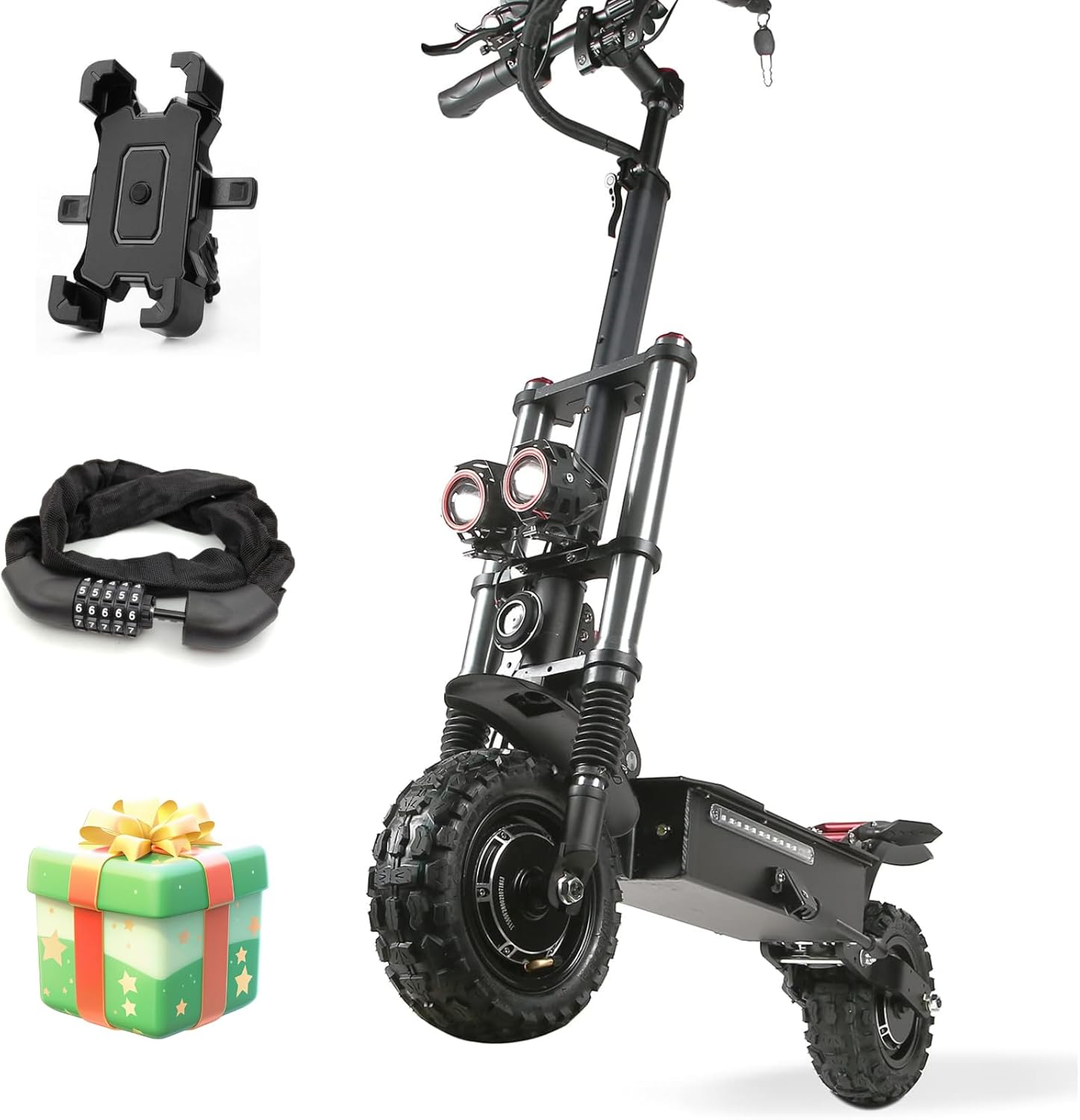
Weight Capacity: 150 kg (330 lbs)
Motor Power: Dual 1200W motors (2400W combined)
Battery Range: Up to 80 km (50 miles)
Top Speed: 80 km/h (50 mph, under optimal conditions)
Why It’s Great for Heavy Adults:
The Wolf Warrior 11 Pro is a beast—literally. Built more like a cross between a scooter and a dirt bike, this model is engineered for strength and power. With a rugged dual suspension system and large 11-inch pneumatic off-road tires, it can handle rough terrain, steep inclines, and higher loads without breaking a sweat.
Standout Features:
Hydraulic suspension (front + rear) for excellent shock absorption
Dual-motor setup provides aggressive acceleration and hill-climbing power
Large, wide deck for secure foot placement
Reinforced frame and ultra-stable stem design—ideal for high-speed riders
Best For:
Heavier riders looking for off-road capability
Daily commuters who travel long distances or face varied terrain
Riders who prioritize raw power and rugged construction
Dualtron Thunder II
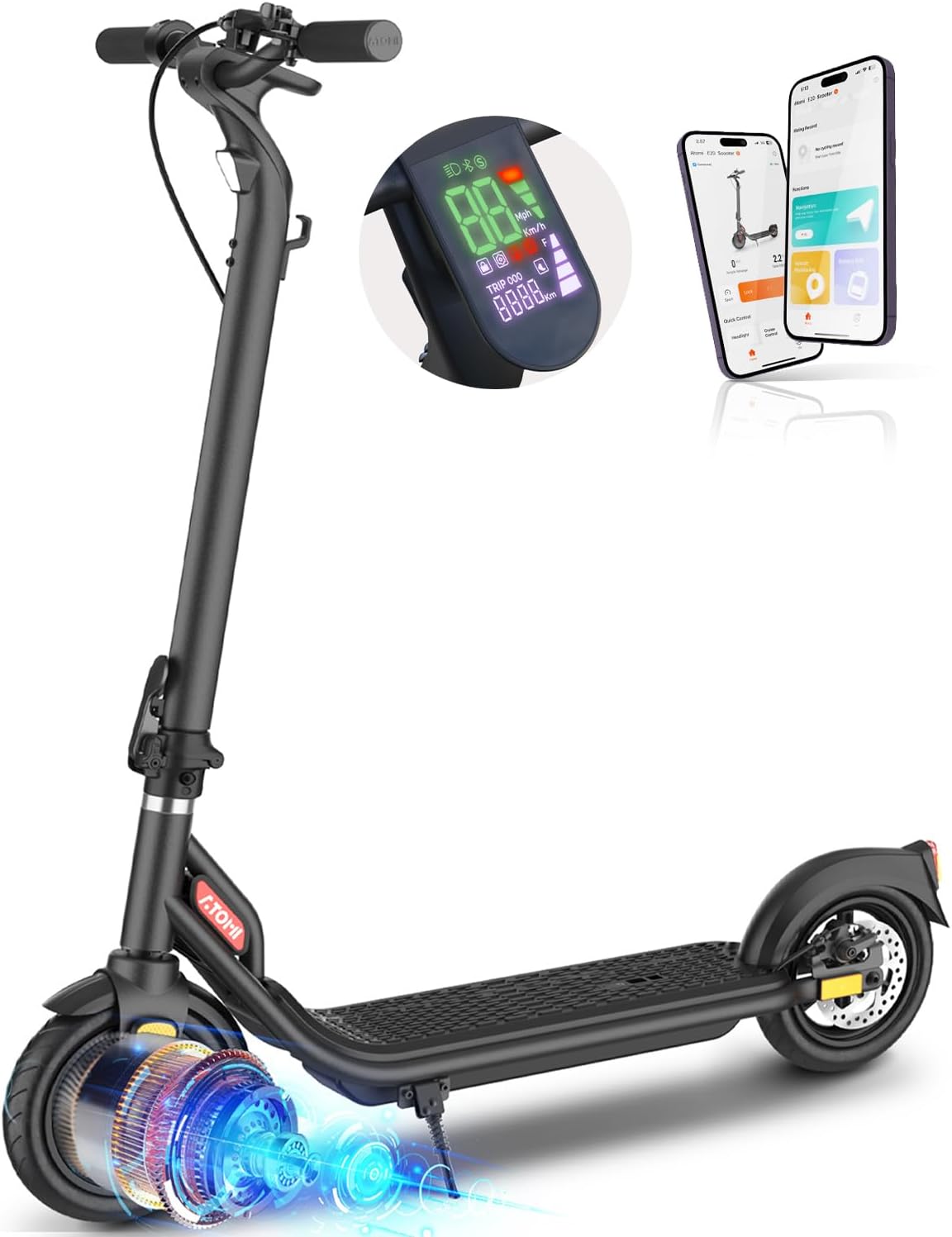
Weight Capacity: 150 kg (330 lbs)
Motor Power: Dual 2700W motors (5400W peak)
Battery Range: Up to 100 km (60+ miles)
Top Speed: 100 km/h+ (62 mph, under ideal conditions)
Why It’s Great for Heavy Adults:
The Dualtron Thunder II is a flagship model for riders who demand extreme performance and unmatched range. Every part of this scooter is heavy-duty, from its magnesium alloy frame to its massive 11-inch tubeless tires.
Its torque and power delivery are particularly valuable for heavier riders—the scooter doesn’t struggle to accelerate even when approaching max load. Despite its massive power, it also offers smooth braking, smart lighting, and excellent handling.
Standout Features:
Adjustable suspension system (elastomer cartridges)
Hydraulic disc brakes for controlled stopping at high speeds
Anti-lock braking system (ABS) and dual LED headlights
Sleek dashboard with customizable settings via remote or app
Best For:
Experienced riders looking for extreme performance
Heavier adults who need a scooter for long-distance rides
Those who ride on both urban streets and light trails
EMOVE Cruiser
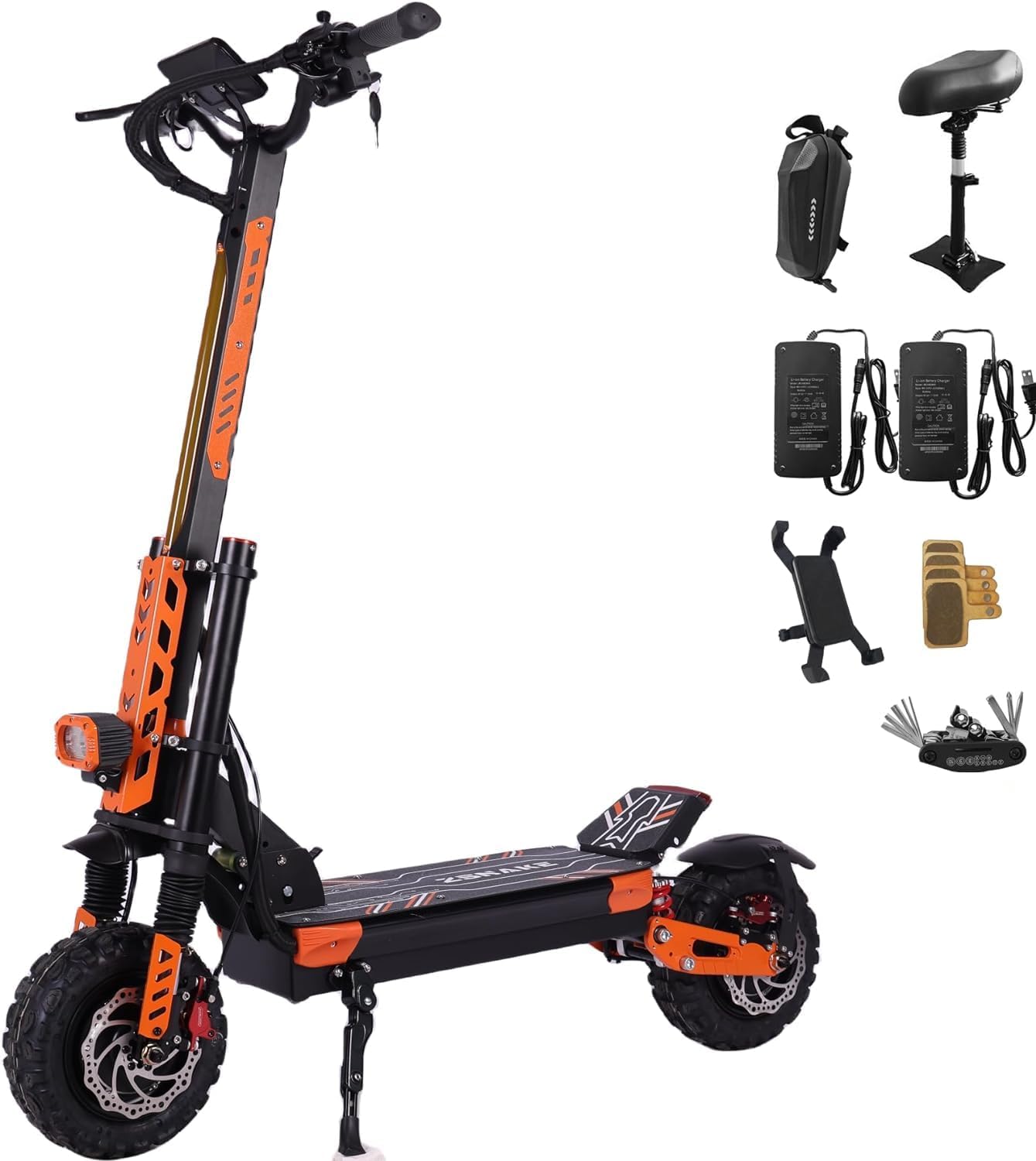
Weight Capacity: 160 kg (352 lbs)
Motor Power: 1000W rear hub motor
Battery Range: Up to 100 km (62 miles)
Top Speed: 50 km/h (31 mph)
Why It’s Great for Heavy Adults:
The EMOVE Cruiser is the gold standard for commuting heavy riders. Despite being a single-motor scooter, it delivers consistent torque and excellent battery life. With a wide deck, IPX6 water resistance rating, and a strong folding mechanism, it’s an everyday workhorse built with comfort in mind.
It may not win races, but it’s incredibly dependable and efficient—perfect for real-world commuting.
Standout Features:
Massive 52V 30Ah battery for long range and power efficiency
10-inch tubeless pneumatic tires for a smoother, puncture-resistant ride
Suspension on both front and rear for urban comfort
Foldable handlebars for compact storage
Best For:
Riders seeking long-range commutes without sacrificing comfort
Heavy adults who want a reliable, low-maintenance scooter
Urban riders who prefer a balanced, well-designed machine
NAMI Burn-E 2 (a.k.a. “Viper”)
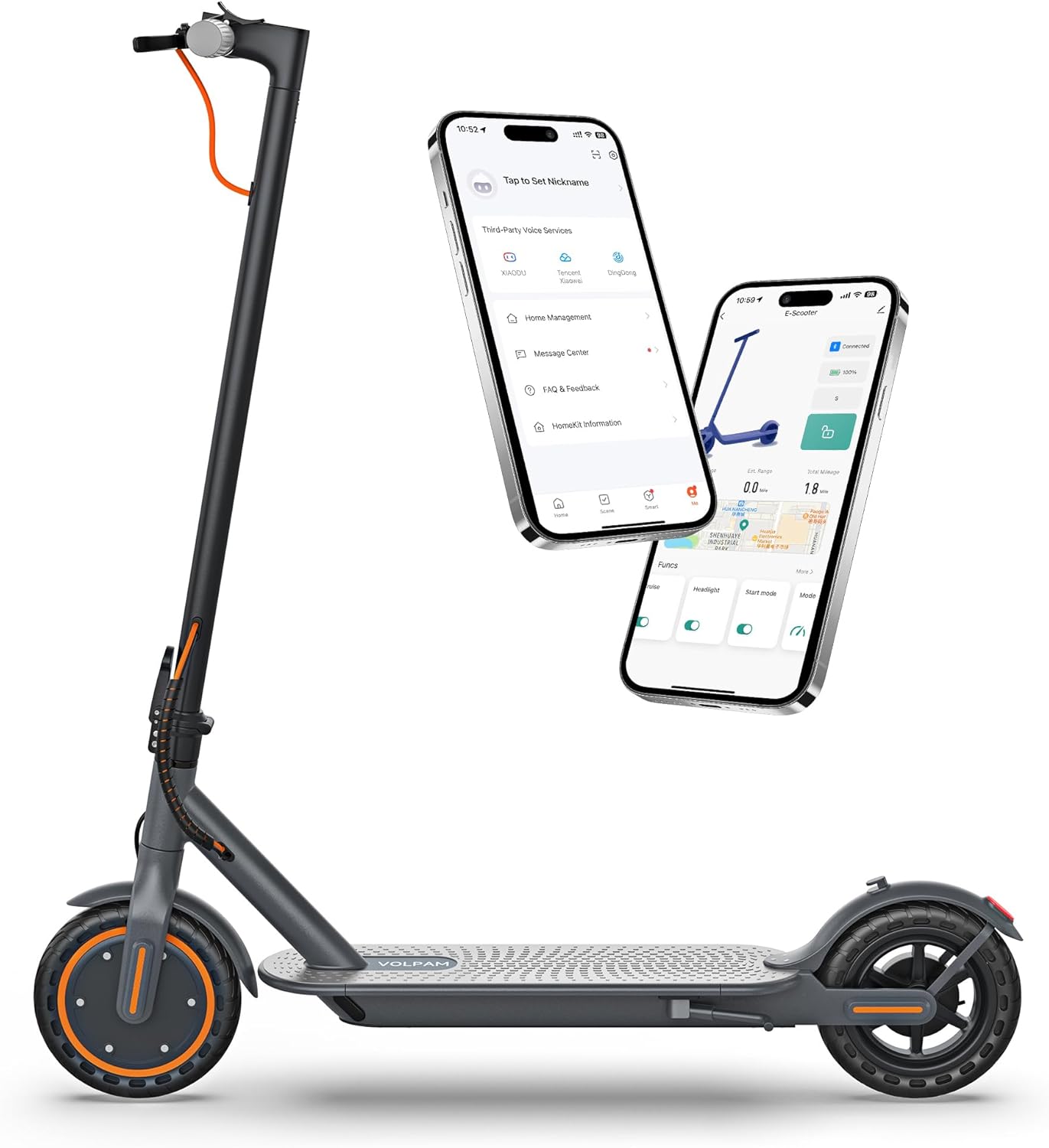
Weight Capacity: 150 kg (330 lbs)
Motor Power: Dual 1500W motors (3000W combined)
Battery Range: Up to 90–100 km
Top Speed: 70–90 km/h (varies by model)
Why It’s Great for Heavy Adults:
The Burn-E 2 is all about premium engineering and rider-focused design. It combines serious power with a buttery-smooth ride, thanks to fully adjustable hydraulic suspension and wide tires. Heavy riders will appreciate how it doesn’t wobble or vibrate even at high speeds or over uneven pavement.
Its aviation-grade aluminum frame, welded instead of bolted, gives it serious structural integrity.
Standout Features:
Custom-tuned sinewave controllers for smooth acceleration
11-inch tires with excellent ground grip
Full hydraulic brakes with regenerative capabilities
Programmable display and performance settings
Best For:
Riders who want high-tech performance with luxury ride feel
Heavier adults looking for a smooth but powerful urban or suburban scooter
Long-distance commuters who prefer adjustable control
Apollo Phantom V3
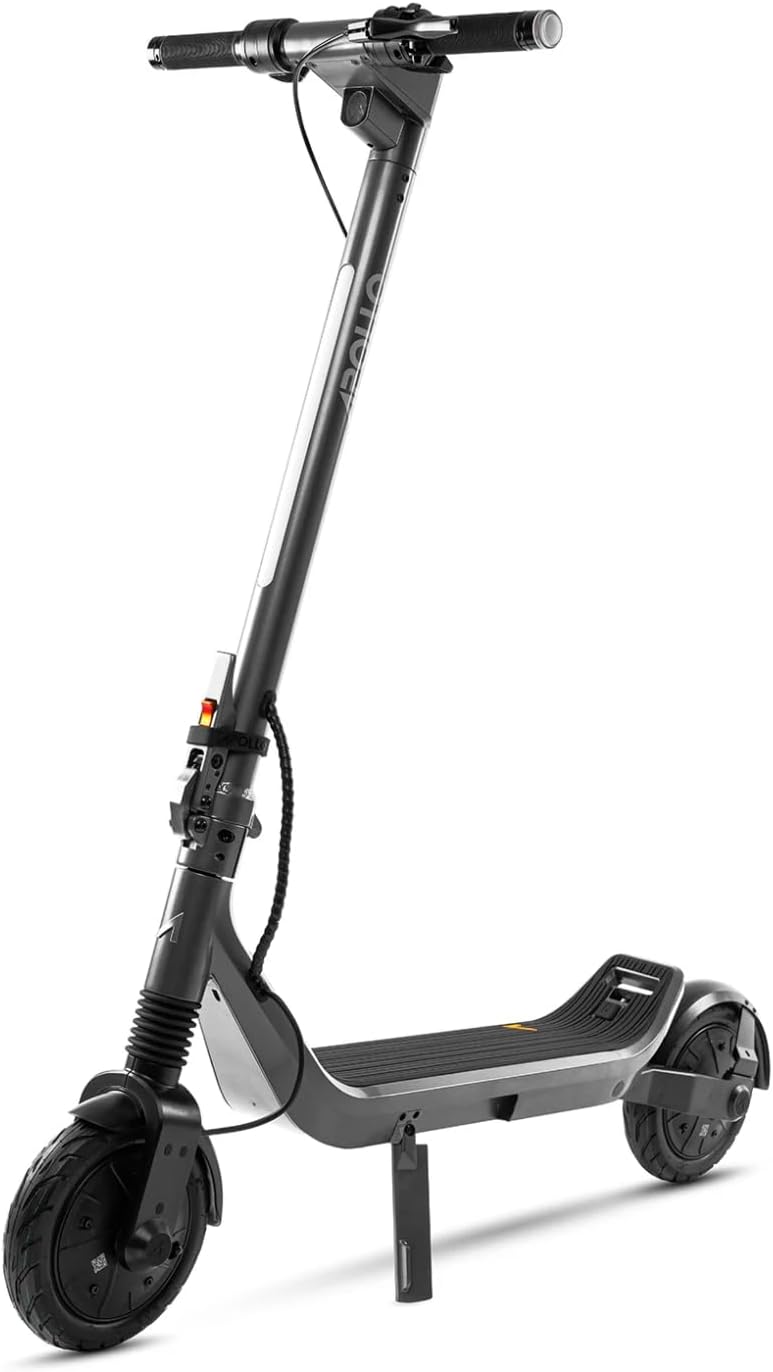
Weight Capacity: 136 kg (300 lbs)
Motor Power: Dual 1200W motors (2400W total)
Battery Range: Up to 64 km
Top Speed: 65 km/h (40 mph)
Why It’s Great for Heavy Adults:
The Apollo Phantom V3 is a sleek, responsive scooter built for precision and control. It’s loaded with intelligent features like a proprietary LUDO mode for performance boosting, self-healing tires, and a gorgeous handlebar-integrated display.
It performs very well under load, thanks to a newly redesigned suspension system and robust deck/stem combo. It’s especially loved for its comfortable ride posture and intuitive control layout.
Standout Features:
Upgraded quadruple suspension system
Regenerative braking in combination with mechanical disc brakes
Proprietary HEX display with real-time diagnostics
Smooth throttle response and multiple ride modes
Best For:
Tech-savvy riders who want smart features and refined design
Heavy riders who enjoy cruising with confidence
Urban riders prioritizing control, comfort, and style
There’s no one-size-fits-all scooter, especially when you’re a heavier adult. What matters most is matching your body weight, commute style, terrain, and performance preferences with a scooter that delivers in every category.
Whether you want high-speed power, ultra-long range, or unbeatable comfort, the scooters listed above represent the best in their class for 2025—trusted by real riders and built for serious use.
Final Thoughts: Ride Smart, Ride Strong
Choosing the best electric scooter as a heavy adult is about more than just specs on paper—it’s about finding a reliable, powerful, and safe ride that suits your body, lifestyle, and daily needs.
Throughout this guide, we’ve explored why weight capacity matters and how factors like motor power, build quality, and safety features can dramatically impact performance and rider experience. We’ve also uncovered common mistakes to avoid—like underestimating battery capacity or settling for lightweight, underbuilt models—and showcased the top-performing scooters built to handle heavier loads with ease.
Here’s what to remember as you shop:
Motor power matters more than top speed—you need torque to move efficiently, especially uphill.
Frame strength and suspension aren’t optional—they’re crucial for durability and comfort.
Battery capacity impacts real-world range, especially under higher loads.
Safety is not a bonus—it’s a requirement. Brakes, lights, and tires all contribute to your well-being on the road.
Whether you’re commuting to work, running errands, or just enjoying the freedom of two wheels, the right scooter will give you confidence, comfort, and control—every time you ride.
One Last Tip:
Buy with tomorrow in mind. Choose a model that doesn’t just meet your needs today, but will still perform a year or two down the road. Durability, upgrade potential, and after-sale support are just as important as your first ride.
Explore your options, test where possible, and prioritize quality over shortcuts. The right electric scooter isn’t just a mode of transport—it’s your key to daily freedom, mobility, and joy on the road.

